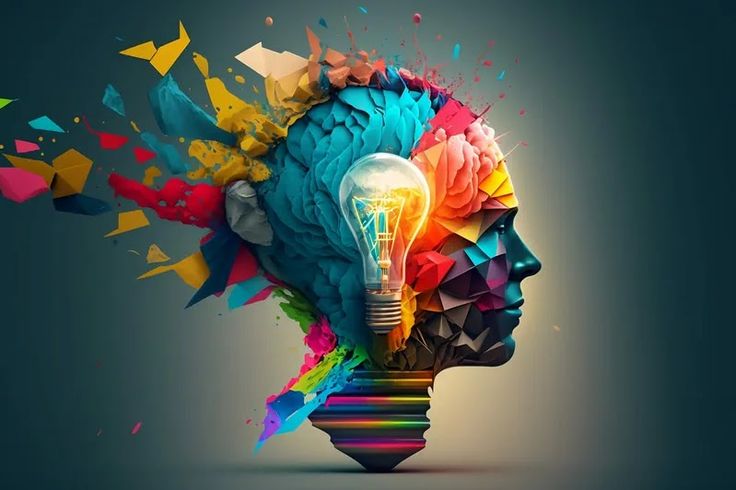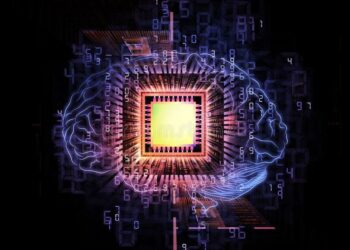The landscape of creativity, once considered an exclusively human domain, is undergoing a monumental transformation. At the vanguard of this shift is Generative AI, a revolutionary branch of artificial intelligence capable of creating entirely new, original content across diverse modalities, from stunning images and compelling text to intricate music compositions and even novel protein structures. This isn’t merely automation; it’s about machines learning the underlying patterns and structures of existing data to then produce entirely novel outputs that often defy human intuition. Generative AI is rapidly unleashing unprecedented creative power, empowering individuals and organizations to innovate at speeds and scales previously unimaginable, marking a true unleashing of creative potential.
The Evolution of AI in Creativity: From Analysis to Generation
To truly appreciate the groundbreaking capabilities of Generative AI, it’s crucial to understand its progression within the broader history of artificial intelligence and its interaction with creative processes.
A. Early AI: Rule-Based Systems and Expert Systems
The initial forays into AI largely focused on automating tasks through explicit rules.
- Symbolic AI: Early AI systems, prevalent from the 1950s to the 1980s, primarily operated on symbolic logic and rule-based programming. They excelled at tasks with well-defined rules, like chess or expert systems for medical diagnosis.
- Limited Creativity: These systems could solve problems within their defined domains, but their ‘creativity’ was constrained by the rules explicitly programmed into them. They couldn’t generate truly novel ideas or adapt to unforeseen scenarios outside their knowledge base. Their output was predictable and lacked originality.
- Data Dependency: While they processed data, their output wasn’t generated from patterns in that data in a fluid, emergent way. Any new ‘creative’ output required a human to encode new rules.
B. Machine Learning: Pattern Recognition and Prediction
The advent of machine learning shifted the focus from explicit rules to pattern recognition from data.
- Supervised and Unsupervised Learning: Machine learning models learned from large datasets to identify patterns. Supervised learning enabled tasks like image classification (identifying a cat in a picture) or sentiment analysis. Unsupervised learning helped in clustering data or finding hidden structures.
- Predictive, Not Generative: While powerful for analysis and prediction, these models were primarily discriminative. They could tell you what something was or if something would happen, but they couldn’t create new instances of data. For example, a machine learning model could classify images of cats, but it couldn’t draw a new, unique cat.
- Feature Engineering: Much of the effort in traditional machine learning involved ‘feature engineering’ – humans hand-crafting the most relevant features for the model to learn from, limiting its autonomy and creative scope.
C. Deep Learning: Automated Feature Extraction and Complexity
Deep learning, a subset of machine learning utilizing neural networks with many layers, dramatically increased the ability of AI to handle complex, high-dimensional data like images, audio, and natural language.
- Neural Networks and Representation Learning: Deep neural networks could automatically learn intricate features and representations from raw data, bypassing the need for manual feature engineering. This allowed them to understand more complex patterns.
- Early ‘Generative’ Attempts (Limited): While not ‘generative’ in the current sense, some deep learning models started to show hints of generation, like simple text completion or style transfer. However, these were often constrained or lacked the open-ended originality that would define true generative AI.
- The Need for Novelty: The ultimate goal remained to build systems that could not only understand and analyze data but could also synthesize new, plausible, and novel data that resembled the training data but was distinct from it. This led to the development of dedicated generative models.
D. Generative AI: Synthesis and Original Creation
Generative AI represents the pinnacle of this evolution, where models learn the underlying distributions of data to produce entirely novel content.
- Learning Data Distributions: Generative models are trained on vast datasets to learn the statistical regularities and relationships within the data. This allows them to grasp the ‘grammar’ or ‘style’ of the data.
- Producing Novel Outputs: Once trained, these models can sample from these learned distributions to generate new data instances that are distinct from the training examples but share their characteristics. For example, generating a unique face that has never existed, or writing a story in a specific author’s style.
- Foundation Models and Large-Scale Training: The most advanced Generative AI models today are often ‘foundation models’ (e.g., Large Language Models like GPT, diffusion models for images) trained on incredibly diverse and vast datasets, enabling them to perform a wide range of tasks and exhibit emergent creative abilities.
- Prompt Engineering: Users interact with these models through ‘prompts’ – textual or other inputs that guide the generation process, allowing for unprecedented creative control and exploration.
This capability to synthesize new, original, and often high-quality content across modalities is what truly marks Generative AI as a game-changer, democratizing and amplifying creative power.
Core Architectures and Technologies Driving Generative AI
The breakthrough capabilities of Generative AI are powered by sophisticated neural network architectures and advanced training methodologies. Understanding these underlying technologies is key to appreciating their potential.
A. Generative Adversarial Networks (GANs)
GANs were one of the earliest and most impactful architectures for image generation, introduced by Ian Goodfellow in 2014. They consist of two competing neural networks:
- Generator Network: This network takes random noise as input and tries to generate realistic-looking data (e.g., an image).
- Discriminator Network: This network acts as a critic. It receives both real data from the training set and fake data generated by the Generator. Its task is to distinguish between real and fake data.
- Adversarial Training: The two networks are trained simultaneously in a zero-sum game. The Generator tries to fool the Discriminator into thinking its generated data is real, while the Discriminator tries to get better at identifying the fakes. This adversarial process drives both networks to improve, resulting in the Generator producing increasingly realistic and high-quality outputs.
GANs have been highly successful in generating photorealistic images, translating images from one domain to another (e.g., turning sketches into photos), and even generating synthetic data for training other AI models.
B. Variational Autoencoders (VAEs)
VAEs are a type of generative model that learn a compressed, latent representation of the input data and then use this representation to generate new data.
- Encoder-Decoder Structure: A VAE consists of an encoder that maps input data to a latent space (a compressed, lower-dimensional representation) and a decoder that reconstructs the data from this latent space.
- Probabilistic Approach: Unlike traditional autoencoders that learn a single latent vector, VAEs learn a distribution (mean and variance) in the latent space, enabling them to generate diverse and novel samples by sampling from this learned distribution.
- Smooth Latent Space: VAEs aim to create a continuous and smooth latent space, meaning that small changes in the latent vector result in semantically meaningful changes in the generated output. This allows for interpolation between different generated items.
VAEs are particularly useful for tasks like anomaly detection, data imputation, and generating variations of existing data, and they provide more control over the generated content compared to GANs.
C. Transformers and Diffusion Models
These are the architectures that power many of the state-of-the-art Generative AI models seen today, especially for large-scale text and image generation.
- Transformer Architecture (for Text/Sequence Data):
- Self-Attention Mechanism: Transformers, first introduced by Google in 2017, revolutionized sequence modeling. Their core innovation is the self-attention mechanism, which allows the model to weigh the importance of different parts of the input sequence when processing each element.
- Parallelization: Unlike recurrent neural networks (RNNs), Transformers can process input sequences in parallel, making them highly efficient for training on massive datasets.
- Large Language Models (LLMs): The Transformer architecture is the foundation of LLMs like OpenAI’s GPT series, Google’s Gemini, and Meta’s Llama. These models are trained on vast amounts of text data to predict the next word, enabling them to generate coherent, contextually relevant, and creatively diverse text for tasks like writing articles, creative storytelling, coding, and translation.
- Diffusion Models (for Image/Audio Data):
- Noise-to-Image Generation: Diffusion models work by learning to reverse a process of gradually adding noise to an image until it becomes pure noise. During generation, they start with random noise and progressively ‘denoise’ it, step-by-step, to synthesize a high-quality, realistic image.
- Controlled Generation: They often allow for fine-grained control over the generated output using text prompts (e.g., DALL-E, Midjourney, Stable Diffusion), enabling users to ‘paint with words.’
- High Quality and Diversity: Diffusion models have achieved unprecedented levels of photorealism and diversity in image generation, often outperforming GANs in terms of visual quality and robustness.
These advanced architectures, combined with massive datasets and immense computational power, are pushing the boundaries of what Generative AI can create.
Unlocking the Power: Key Applications of Generative AI
The capabilities of Generative AI are not just theoretical; they are rapidly being applied across a vast spectrum of industries and creative domains, transforming workflows and unlocking new possibilities.
A. Content Creation and Media Production
Generative AI is revolutionizing how various forms of content are created, accelerating processes and enabling new creative avenues.
- Text Generation:
- Marketing Copy: Automatically generating headlines, ad copy, product descriptions, and social media posts.
- Content Writing: Assisting with article drafts, blog posts, summaries, and even creative storytelling or screenplays.
- Personalized Communication: Crafting personalized emails, reports, or customer service responses at scale.
- Image and Visual Art Generation:
- Concept Art and Illustration: Rapidly generating diverse visual concepts for games, films, or product design.
- Stock Photography Alternatives: Creating unique, royalty-free images tailored to specific needs.
- Product Prototyping: Visualizing product designs in different styles, materials, and environments without physical prototypes.
- Text-to-Image Synthesis: Creating photorealistic or artistic images from simple text descriptions (e.g., ‘a cat in an astronaut suit on the moon’).
- Music and Audio Composition:
- Background Scores: Generating instrumental music for videos, podcasts, or games based on mood or genre.
- Sound Effects: Creating custom sound effects for immersive experiences.
- Personalized Playlists: Curating or generating music tailored to individual user preferences and activities.
- Video Generation:
- Short Clips and Ads: Automatically creating short video clips from text prompts or existing images.
- Virtual Avatars: Generating realistic or stylized virtual characters for simulations, games, or virtual meetings.
- Content Localization: Translating and localizing video content with AI-generated voiceovers and lip-syncing.
B. Software Development and Code Generation
Generative AI is rapidly becoming an indispensable tool for developers, significantly boosting productivity and accelerating software creation.
- Code Completion and Generation: Assisting developers by suggesting code snippets, completing functions, or even generating entire code blocks from natural language descriptions (e.g., GitHub Copilot, Google’s Gemini for code).
- Bug Detection and Fixing: Identifying potential bugs in code and suggesting fixes, or even automatically generating test cases to ensure code quality.
- API Generation: Creating API specifications and boilerplate code from high-level descriptions.
- Documentation Generation: Automatically generating code documentation, user manuals, and technical specifications.
- Test Data Generation: Creating realistic synthetic test data for development and quality assurance, particularly useful for sensitive data scenarios.
C. Product Design and Engineering
Generative AI is transforming traditional design processes, enabling faster iteration and optimized solutions.
- Generative Design: AI algorithms explore millions of design variations for products (e.g., car parts, architectural structures) based on specified constraints (strength, weight, material, manufacturing method), often leading to highly optimized and novel designs impossible to conceive manually.
- Material Discovery: Simulating and designing new materials with desired properties at the molecular level, accelerating materials science research.
- Drug Discovery: Generating novel molecular structures with therapeutic potential, significantly speeding up the early stages of pharmaceutical research.
- Chip Design: Automating parts of the complex semiconductor chip design process, leading to more efficient and powerful microprocessors.
D. Personalization and Customer Experience
Generative AI enables hyper-personalization, enhancing user experience and engagement.
- Dynamic Content Personalization: Generating tailored content (text, images, recommendations) for individual users on websites, e-commerce platforms, or streaming services based on their preferences and behavior.
- Intelligent Chatbots and Virtual Assistants: Powering highly conversational and context-aware chatbots that can generate natural language responses for customer service, sales, and support.
- Personalized Learning Content: Creating adaptive educational materials, exercises, and feedback loops tailored to a student’s individual learning style and pace.
E. Data Augmentation and Synthetic Data Generation
For AI model training, Generative AI can overcome data scarcity and privacy concerns.
- Data Augmentation: Generating new, varied training examples (e.g., slightly altered images, rephrased sentences) to expand datasets and improve the robustness of machine learning models.
- Synthetic Data: Creating entirely artificial datasets that mimic the statistical properties of real-world data but contain no sensitive information. This is invaluable for training models in privacy-sensitive domains like healthcare or finance.
Transformative Advantages of Embracing Generative AI
The adoption of Generative AI offers a compelling array of benefits that directly address limitations in traditional creative and operational workflows, empowering organizations to achieve unprecedented levels of innovation and efficiency.
A. Exponential Boost in Creativity and Innovation
Generative AI acts as a powerful co-creator and ideation engine.
- Overcoming Creative Blocks: Provides a continuous stream of new ideas, concepts, and variations, helping individuals and teams bypass creative blocks and explore possibilities they might not have conceived.
- Rapid Prototyping: Quickly generates multiple design iterations, visual concepts, or textual drafts, significantly accelerating the prototyping phase in product development, content creation, or architectural design.
- Exploration of Vast Design Spaces: AI can explore millions of design permutations that would be impossible for humans to review, leading to novel, optimized, or unexpected solutions in fields like engineering or materials science.
- Democratization of Creation: Lowers the barrier to entry for creative tasks, allowing individuals without specialized artistic or technical skills to generate high-quality content, fostering creativity across broader demographics.
B. Significant Increases in Efficiency and Productivity
By automating repetitive or time-consuming creative and technical tasks, Generative AI dramatically boosts productivity.
- Automated Content Production: Generating marketing copy, social media posts, or basic news articles in seconds, freeing human writers for more complex, strategic, or nuanced tasks.
- Accelerated Development Cycles: Code generation, automated testing, and documentation tools powered by Generative AI can reduce development time significantly, leading to faster time-to-market for software products.
- Streamlined Design Workflows: Rapidly generating visual assets, architectural layouts, or product variants, reducing the manual effort involved in early-stage design and iteration.
- Optimized Resource Allocation: Automating routine tasks allows skilled professionals to focus on higher-value activities that require human judgment, critical thinking, and complex problem-solving.
C. Enhanced Personalization and Customization at Scale
Generative AI enables unparalleled levels of personalized content and experiences for users.
- Hyper-Personalized Content: Generating bespoke marketing messages, product recommendations, or user interface elements tailored to individual user preferences, Browse history, and real-time behavior.
- Adaptive User Experiences: Creating dynamic user interfaces or content flows that adapt and evolve based on continuous interaction and feedback, leading to more engaging and relevant experiences.
- Scalable Customization: Delivering unique content or product variations to millions of users simultaneously, something impossible with manual customization.
D. Cost Reduction and Resource Optimization
While requiring initial investment, Generative AI can lead to substantial long-term cost savings.
- Reduced Manual Labor: Automating content generation, design iterations, or code writing reduces the need for extensive manual labor in these areas, lowering operational costs.
- Optimized Resource Usage: In fields like engineering, generative design can produce designs that are lighter, stronger, or require less material, leading to reduced manufacturing costs and resource consumption.
- Faster Time-to-Market: The speed benefits directly translate to cost savings by reducing development cycles and allowing products to generate revenue sooner.
E. Breakthroughs in Research and Development
Generative AI is a powerful tool for scientific discovery and engineering innovation.
- Accelerated Drug Discovery: Generating novel molecular compounds and simulating their properties, speeding up the early stages of pharmaceutical research that traditionally take years.
- New Material Design: Designing and simulating materials with unprecedented properties, potentially leading to breakthroughs in energy, electronics, and construction.
- Complex System Optimization: Generating optimal configurations for complex systems (e.g., telecommunication networks, supply chains), leading to new efficiencies.
Challenges and Ethical Considerations in Generative AI Adoption
Despite its transformative potential, the widespread adoption of Generative AI presents significant challenges and necessitates careful consideration of profound ethical implications.
A. Data Bias and Fairness
Generative AI models learn from the data they are trained on. If this training data contains biases (e.g., demographic imbalances, historical prejudices), the generated content will reflect and often amplify these biases.
- Reinforcing Stereotypes: AI-generated images or text might inadvertently perpetuate harmful stereotypes or discriminatory representations.
- Unfair Outcomes: In applications like content recommendation or resume generation, biased models could lead to unfair or discriminatory outcomes.
- Mitigation Complexity: Identifying and mitigating bias in vast, complex datasets and deep learning models is a significant technical and ethical challenge, requiring continuous auditing and careful data curation.
B. Intellectual Property and Copyright Issues
The ability of Generative AI to create content similar to existing works raises complex legal and ethical questions around intellectual property (IP) and copyright.
- Training Data Copyright: Is it legal to train AI models on copyrighted material without explicit permission? The legal landscape is still evolving.
- Ownership of AI-Generated Content: Who owns the copyright to content generated by an AI? The user who provided the prompt, the developer of the AI, or is it uncopyrightable?
- Plagiarism and Attribution: AI can generate text or images that closely resemble existing works. How do we ensure proper attribution and prevent unintentional plagiarism? Litigation is ongoing in many countries.
C. Misinformation, Deepfakes, and Abuse
The power of Generative AI to create highly realistic synthetic media presents significant risks for misinformation and malicious use.
- Deepfakes: The creation of highly convincing fake audio, images, and videos (deepfakes) can be used for malicious purposes, such as spreading disinformation, impersonation, fraud, or character defamation.
- Automated Propaganda: Generative AI can be used to rapidly produce and disseminate convincing, false narratives at an unprecedented scale, potentially undermining public trust and democratic processes.
- Scams and Fraud: AI-generated voices or faces can be used in sophisticated phishing attacks or online scams, making them incredibly difficult to detect.
- Erosion of Trust: The widespread availability of generative AI could lead to a general distrust of digital media, making it harder to discern truth from falsehood.
D. Job Displacement and Economic Impact
While Generative AI creates new roles and efficiencies, it also has the potential to automate tasks traditionally performed by human creatives and knowledge workers, leading to concerns about job displacement.
- Creative Industries: Artists, designers, writers, and musicians may see parts of their work automated, necessitating a shift towards roles focused on AI supervision, curation, and high-level conceptualization.
- Knowledge Work: Tasks like data entry, basic report writing, and customer service could be significantly impacted.
- Need for Reskilling: A significant societal challenge will be ensuring that affected workforces are adequately reskilled and upskilled for new roles created by AI, mitigating economic disruption.
E. Hallucinations and Factual Accuracy
Large Language Models (LLMs), a prominent form of Generative AI, are known to “hallucinate” – meaning they confidently generate plausible-sounding but factually incorrect or nonsensical information.
- Lack of Ground Truth: LLMs predict the next most probable token based on patterns, not based on an inherent understanding of truth or facts.
- Reliability Issues: In sensitive applications (e.g., medical advice, financial reporting, legal documents), hallucinations pose a serious risk, as users might unknowingly rely on incorrect AI-generated information.
- Need for Human Oversight: Extensive human oversight and fact-checking remain essential for critical applications of Generative AI.
F. Energy Consumption and Environmental Impact
Training and running large Generative AI models are incredibly resource-intensive processes, requiring massive amounts of computational power.
- High Energy Consumption: The training of foundation models consumes vast quantities of electricity, contributing to carbon emissions.
- Environmental Footprint: The hardware (GPUs, data centers) used for AI also has an environmental footprint in terms of manufacturing and disposal.
- Sustainability Concerns: As Generative AI becomes more pervasive, its growing energy demands raise concerns about its overall environmental sustainability.
G. Regulatory and Governance Gaps
The rapid pace of Generative AI development has outstripped the ability of existing regulatory and governance frameworks to keep pace.
- Lack of Clear Guidelines: There’s a global need for clear guidelines on AI ethics, responsible development, deployment, and accountability.
- International Cooperation: Since AI is a global technology, international cooperation is necessary to establish consistent regulations and prevent regulatory arbitrage.
- Defining Responsibility: In cases of harm caused by AI, who is legally responsible? The developer, the deployer, or the user?
Addressing these challenges requires a multi-faceted approach involving technologists, policymakers, ethicists, and society at large to ensure Generative AI is developed and deployed responsibly for the benefit of humanity.
Best Practices for Responsible and Effective Generative AI Implementation
To harness the immense power of Generative AI while mitigating its inherent risks, organizations must adopt a strategic and ethically conscious approach, focusing on responsible development and deployment.
A. Prioritize Ethical AI Development and Governance
Establish a robust ethical AI framework from the outset.
- Bias Detection and Mitigation: Actively analyze training data for biases and implement strategies to mitigate them (e.g., data balancing, re-weighting, adversarial debiasing). Continuously monitor model outputs for unfairness.
- Transparency and Explainability: Strive for transparency where possible, documenting model architectures, training data sources, and potential limitations. For critical applications, explore explainable AI (XAI) techniques to understand how the model arrives at its outputs.
- Responsible Use Policies: Develop clear internal policies for the ethical and responsible use of Generative AI, especially concerning content moderation, misinformation, and privacy.
- Human Oversight: Always ensure there’s a ‘human in the loop’ for critical decisions or content generation, especially in sensitive domains. AI should augment, not fully replace, human judgment.
B. Focus on Clear Use Cases and Value Creation
Avoid adopting Generative AI just because it’s new. Instead, identify clear business problems where it can provide significant value.
- Problem-First Approach: Start by defining the problem (e.g., “we need to accelerate content creation by X%”) and then evaluate if Generative AI is the optimal solution.
- Pilot Programs: Begin with small, controlled pilot projects to validate the technology’s effectiveness and gather early learnings before broader deployment.
- Measurable Outcomes: Define clear metrics to measure the impact and ROI of Generative AI initiatives.
C. Curate and Monitor Training Data Meticulously
The quality and nature of the training data are paramount for the performance and ethical behavior of Generative AI models.
- High-Quality, Diverse Data: Invest in collecting and curating high-quality, diverse, and representative datasets. Poor data leads to poor or biased outputs.
- Data Governance: Implement robust data governance frameworks covering data lineage, privacy (e.g., PII masking, differential privacy), and security.
- Continuous Monitoring: Continuously monitor the training data for drift, new biases, or other issues that could degrade model performance or introduce ethical problems.
D. Implement Robust Guardrails and Content Moderation
For applications that interact with users or generate public-facing content, strong guardrails and content moderation systems are essential.
- Output Filtering: Implement automated filters to prevent the generation of harmful, biased, illegal, or off-topic content.
- Human Review Loops: For high-stakes applications, incorporate human review and moderation into the content generation workflow.
- Safety Prompts and Fine-Tuning: Use techniques like prompt engineering and fine-tuning with ‘safe’ datasets to steer the model towards desirable outputs and away from undesirable ones.
E. Address Intellectual Property and Legal Compliance
Proactively engage with legal experts and stay informed about the evolving regulatory landscape concerning IP and copyright for AI-generated content.
- Clear Attribution Policies: Establish clear internal policies regarding the attribution of AI-generated content.
- Licensing Awareness: Understand the licensing terms of the Generative AI models and training data you use.
- Synthetic Data for Sensitive Cases: When working with sensitive data, prioritize generating synthetic data to mitigate privacy and compliance risks.
F. Invest in Workforce Reskilling and Collaboration Tools
Prepare your workforce for the shift that Generative AI brings.
- Upskilling Programs: Provide training programs to equip employees with skills in AI tools, prompt engineering, AI supervision, and data analysis.
- Human-AI Teaming: Design workflows that foster effective human-AI collaboration, where AI augments human capabilities rather than replaces them entirely.
- New Role Creation: Anticipate and prepare for the emergence of new roles, such as ‘AI Ethicists,’ ‘Prompt Engineers,’ or ‘AI Content Curators.’
G. Prioritize Explainability and Trust
For adoption to be widespread and impactful, users and stakeholders need to trust Generative AI.
- Explainable AI (XAI): While challenging, invest in techniques that can provide some level of insight into why a model generated a particular output, especially for critical decisions.
- Model Cards and Documentation: Create detailed ‘model cards’ that document the model’s purpose, training data, limitations, and evaluation metrics, building transparency.
- User Feedback Loops: Establish mechanisms for users to provide feedback on generated content, helping to continuously improve model quality and safety.
The Future Trajectory of Generative AI: Beyond the Horizon
Generative AI is still in its nascent stages, yet its future promises even more profound, pervasive, and sophisticated capabilities, fundamentally reshaping industries and human-computer interaction.
A. Multimodal and Cross-Modal Generation
The current trend is towards increasingly multimodal Generative AI, where models can understand and generate content across multiple modalities simultaneously.
- Text-to-Everything: Generating coherent stories that include text, images, video clips, and even music, all from a single prompt.
- Cross-Modal Translation: Translating concepts from one modality to another (e.g., generating music that evokes a specific painting, or creating tactile models from audio descriptions).
- Embodied AI: Integrating generative capabilities with robotics and physical agents, allowing AI to create and interact with the real world (e.g., a robot designing a new object and then autonomously manufacturing it).
B. Hyper-Personalization and Adaptive AI
Generative AI will move beyond basic personalization to truly adaptive, context-aware systems.
- Individualized Creation: Generating content that is not just tailored to preferences but adapts in real-time to a user’s emotional state, cognitive load, or specific learning needs.
- Dynamic Environments: Creating entire virtual environments (e.g., for gaming, training, or therapy) that dynamically adapt based on user interaction and intent.
- Proactive Assistance: AI systems that anticipate user needs and proactively generate relevant information, creative content, or solutions before being explicitly prompted.
C. Foundation Models and Ecosystems
The era of massive foundation models will continue, but with increasing specialization and ecosystem development.
- Domain-Specific Models: While general-purpose models will remain powerful, highly specialized generative models will emerge, fine-tuned for specific industries (e.g., legal, medical, engineering) with deep domain knowledge.
- Model Chaining and Orchestration: Complex tasks will be achieved by chaining multiple generative models together (e.g., one AI generates a script, another generates visuals, a third generates audio), managed by sophisticated orchestration layers.
- Federated and Decentralized AI: Exploring approaches where generative models are trained and deployed in more distributed or privacy-preserving ways, potentially using federated learning or Web3 technologies.
D. Ethical AI as a First-Class Citizen
As AI becomes more powerful, the focus on ethical AI development and governance will intensify, moving beyond reactive measures to proactive design principles.
- AI Safety Research: Increased investment in research dedicated to AI safety, alignment, and preventing unintended consequences from powerful generative systems.
- Regulatory Frameworks: Maturing international and national regulatory frameworks that provide clear guidelines for the responsible development, deployment, and auditing of Generative AI.
- Interpretability and Trustworthiness: Continued advancements in explainable AI (XAI) and tools for assessing the trustworthiness, robustness, and fairness of generative models.
E. AI-Powered Synthetic Worlds and Metaverses
Generative AI will be central to building the next generation of digital realities and metaverses.
- Automated World Creation: Generating vast, detailed, and dynamic virtual worlds and their inhabitants on the fly, for gaming, simulation, or social interaction, drastically reducing manual development time.
- Immersive Storytelling: Creating interactive narratives and experiences where story elements, characters, and environments are dynamically generated and adapted in real time based on user choices.
- Virtual Economies: Powering dynamic virtual economies with AI-generated assets, goods, and services, driving new forms of digital commerce.
Conclusion
Generative AI represents a watershed moment in the history of technology and human creativity. It transcends simple automation, offering the profound capability to create entirely new, original content across virtually every digital medium. This is not about machines replacing human ingenuity, but rather about them acting as an unparalleled amplifier, empowering individuals and organizations to unlock new frontiers of innovation, accelerate creative processes, and achieve levels of personalization previously considered impossible.
While navigating the complexities of data bias, intellectual property, and ethical deployment is crucial, the transformative potential of Generative AI is undeniable. As this technology matures, integrating more deeply with multimodal capabilities, advanced AI, and ethical governance frameworks, it will continue to reshape industries, democratize creative expression, and drive an era where the lines between human and artificial creativity become increasingly blurred. Generative AI is not just a tool; it is the catalyst for a new renaissance, truly unleashing the creative power of the digital age.










